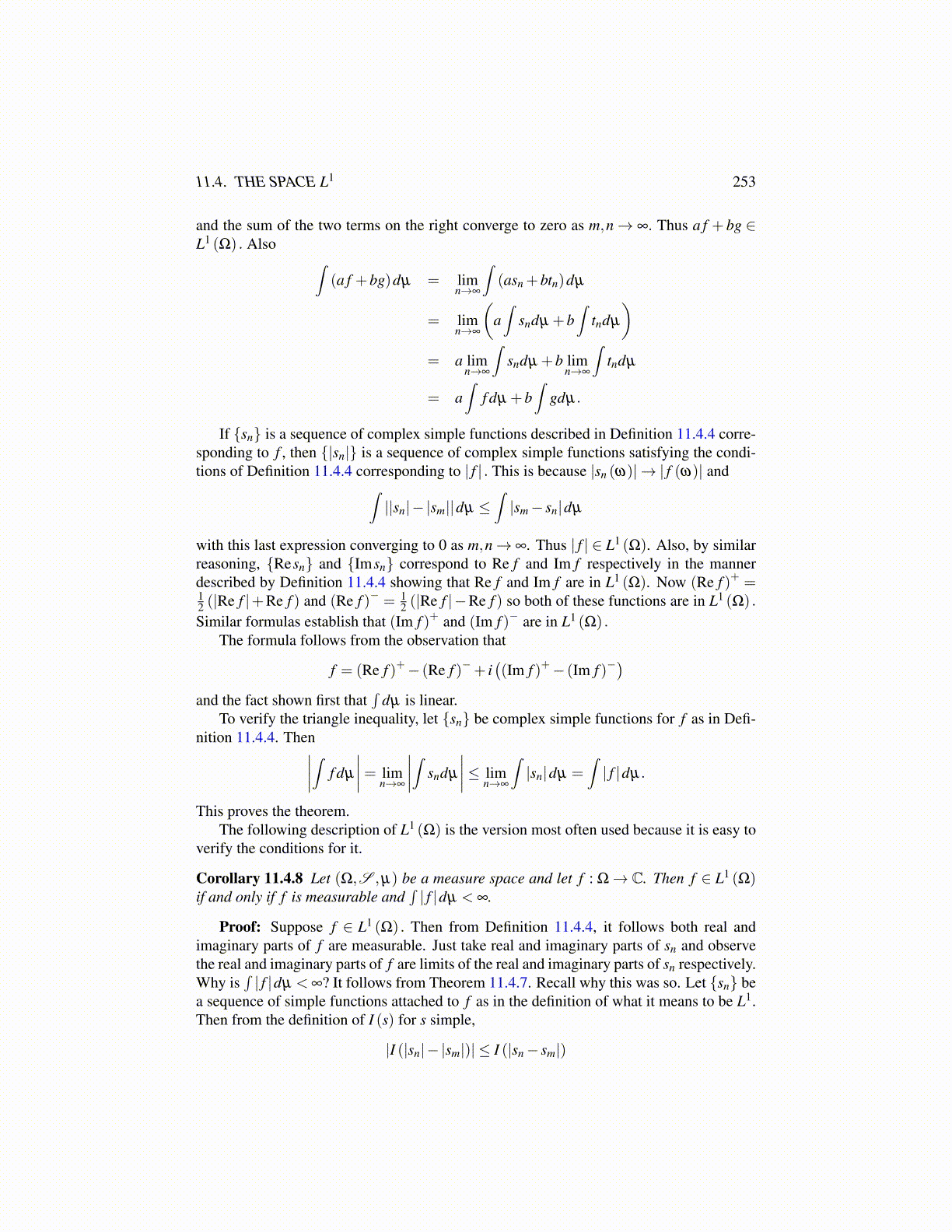
11.4. THE SPACE L1 253
and the sum of the two terms on the right converge to zero as m,n→ ∞. Thus a f + bg ∈L1 (Ω) . Also ∫
(a f +bg)dµ = limn→∞
∫(asn +btn)dµ
= limn→∞
(a∫
sndµ +b∫
tndµ
)= a lim
n→∞
∫sndµ +b lim
n→∞
∫tndµ
= a∫
f dµ +b∫
gdµ.
If {sn} is a sequence of complex simple functions described in Definition 11.4.4 corre-sponding to f , then {|sn|} is a sequence of complex simple functions satisfying the condi-tions of Definition 11.4.4 corresponding to | f | . This is because |sn (ω)| → | f (ω)| and∫
||sn|− |sm||dµ ≤∫|sm− sn|dµ
with this last expression converging to 0 as m,n→ ∞. Thus | f | ∈ L1 (Ω). Also, by similarreasoning, {Resn} and {Imsn} correspond to Re f and Im f respectively in the mannerdescribed by Definition 11.4.4 showing that Re f and Im f are in L1 (Ω). Now (Re f )+ =12 (|Re f |+Re f ) and (Re f )− = 1
2 (|Re f |−Re f ) so both of these functions are in L1 (Ω) .
Similar formulas establish that (Im f )+ and (Im f )− are in L1 (Ω) .The formula follows from the observation that
f = (Re f )+− (Re f )−+ i((Im f )+− (Im f )−
)and the fact shown first that
∫dµ is linear.
To verify the triangle inequality, let {sn} be complex simple functions for f as in Defi-nition 11.4.4. Then∣∣∣∣∫ f dµ
∣∣∣∣= limn→∞
∣∣∣∣∫ sndµ
∣∣∣∣≤ limn→∞
∫|sn|dµ =
∫| f |dµ.
This proves the theorem.The following description of L1 (Ω) is the version most often used because it is easy to
verify the conditions for it.
Corollary 11.4.8 Let (Ω,S ,µ) be a measure space and let f : Ω→ C. Then f ∈ L1 (Ω)if and only if f is measurable and
∫| f |dµ < ∞.
Proof: Suppose f ∈ L1 (Ω) . Then from Definition 11.4.4, it follows both real andimaginary parts of f are measurable. Just take real and imaginary parts of sn and observethe real and imaginary parts of f are limits of the real and imaginary parts of sn respectively.Why is
∫| f |dµ < ∞? It follows from Theorem 11.4.7. Recall why this was so. Let {sn} be
a sequence of simple functions attached to f as in the definition of what it means to be L1.Then from the definition of I (s) for s simple,
|I (|sn|− |sm|)| ≤ I (|sn− sm|)